Correctional QuickPass: Expert Prep Course with Free Practice Test
- Practice Test
- Curriculum
- Sample Questions
- FAQs
- Reviews
Are you ready to ace your Correctional Officer Exam? Our comprehensive prep course is designed to help you succeed with confidence.
Correctional officers play a crucial role in maintaining order and ensuring the safety of inmates and staff within correctional facilities. To secure this demanding role, you must excel in the initial computer-based multiple-choice test.
With our free practice tests, you can assess your knowledge in key areas such as basic math, memory, reading comprehension, applying rules and information, and written communication. The practice questions are carefully crafted to simulate the actual exam experience, helping you identify areas where you need improvement.
Prepare with us, and step into your exam with the confidence and knowledge needed to succeed.
Free Correctional Officer Practice Test
Struggling to know where to begin? This free Correctional Officer practice test gives you a realistic preview of the exam—so you can identify your weak spots early and start focusing your prep where it matters most.
No signup required – instant results.
Correctional Officer Practice Test
Correctional Officer Test Format
Aspiring correctional officers must pass a comprehensive psychometric assessment administered by criminal justice departments. The test format varies by state but typically includes multiple-choice questions. The scores are based on a 100-point scale, with most states requiring a minimum score of 70%.
The test assesses a candidate’s ability to apply knowledge and think critically in various situations. Common topics include Written Comprehension, Written Expression, Memorization, Problem Sensitivity, Number Facility, Mathematical Reasoning, Deductive Reasoning, Inductive Reasoning, Information Ordering, Spatial Orientation, and Visualization.
State-Specific Requirements
- New York State: 3.5-hour exam with 100 multiple-choice questions, assessing Written Comprehension, Written Expression, Problem Sensitivity, Memorization, Number Facility, Mathematical Reasoning, Deductive Reasoning, Inductive Reasoning, Information Ordering, Spatial Orientation and Visualization.
- California Board of State and Community Corrections (BSCC) Test: 2.5-hour test covering 50–70 questions focused on written directions, reading, writing skills, form accuracy, coded data, and workplace attitudes.
- California Department of Corrections and Rehabilitation (CDCR) Exam: 1 hour and 45 minutes, comprising 52 questions, assessing Grammar, Spelling, Punctuation, Reading Comprehension, and Basic Mathematics.
- Florida Criminal Justice Basic Abilities Test – Correctional Officer (CJBATCO) Exam: 97 multiple-choice questions, 1 Hour and 30 Minutes time limit, assessing Written Comprehension, Written Expression, Inductive Reasoning, Deductive Reasoning, Memorization, and Personal Characteristics / Behavioral Attributes.
- New Jersey LEE (Law Enforcement Examination): 329 questions, 3 Hours and 40 minutes time limit, assessing Written Ability, Work Style Questionnaire, and Life Experience Survey.
- Massachusetts Correctional Officer Exam: 100 multiple-choice questions evaluating six abilities, including gathering information, identifying grammar accurately, reading, understanding, explaining, and applying information, working accurately with names, numbers, codes, and/or symbols, analyzing and determining the applicability of quantitative and qualitative data, and maintaining accurate records.
- Michigan National Correctional Officer Selection Inventory (NCOSI): 1 hour and 15 minutes of exam duration, comprising 87 questions, testing Problem Sensitivity, Reading Comprehension, Mathematics, Writing Ability and Personality Attributes.
Correctional Officer Exam Sample Questions & Answers
Below you’ll find sets of sample questions for each core domain. These questions are designed to give you a clear sense of what to expect—and how questions are structured—in every section of the exam.
Written Comprehension
Tests the ability to read and understand written material, including vocabulary, grammar, punctuation, and literary style.
The protocols for maintaining mental health services within a correctional facility are designed to support the psychological well-being of inmates, reduce behavioral issues, and promote a safer environment. The first step in these protocols is the initial mental health screening conducted upon an inmate’s arrival. This screening involves a comprehensive evaluation by a mental health professional, including a review of the inmate’s psychiatric history, current mental state, and any history of substance abuse.
…
Based on the initial screening, inmates may be referred for further psychological assessment or placed into appropriate mental health programs. These programs range from individual therapy sessions and group counseling to specialized treatments for conditions such as PTSD, depression, and anxiety. The facility ensures that mental health services are delivered by licensed professionals trained in correctional psychology.
Regular mental health check-ins are conducted to monitor inmates’ progress and adjust treatment plans as necessary. These check-ins help identify any emerging issues and ensure that inmates receive continuous support. In addition to scheduled sessions, inmates have access to crisis intervention services for immediate psychological support in emergencies.
To encourage participation in mental health programs, the facility offers various incentives. These may include privileges such as additional recreational time, access to special programs, or positive reports to parole boards. Such incentives aim to motivate inmates to engage actively in their mental health care.
Documentation and confidentiality are critical aspects of the mental health services protocol. Detailed records of all assessments, treatments, and progress notes are maintained securely to protect inmates’ privacy and ensure continuity of care. These records are only accessible to authorized personnel.
Challenges in maintaining effective mental health services include addressing the stigma associated with mental health issues, which can deter inmates from seeking help. Additionally, the high-stress environment of a correctional facility can exacerbate mental health problems. To mitigate these challenges, staff receive ongoing training in mental health awareness and crisis intervention. The facility also fosters a supportive environment by promoting mental health education and reducing stigma through various initiatives.
The ultimate goal of these protocols is to provide comprehensive mental health care that helps inmates manage their conditions, improve their quality of life, and reduce the likelihood of behavioral issues. By prioritizing mental health, the facility aims to create a safer, more supportive environment for both inmates and staff.
-
A:
By promoting mental health education and initiatives to reduce stigma.
-
B:
By encouraging inmates to support each other in mental health programs.
-
C:
By offering confidential and anonymous mental health services.
-
D:
By providing staff with ongoing training to better handle mental health crises.
Explanation:
A: By promoting mental health education and initiatives to reduce stigma. - The passage directly states that the facility promotes mental health education and initiatives aimed at reducing stigma. This approach is an active method to combat negative perceptions and improve awareness about mental health issues, making it clear that this option does not correctly answer the question regarding what the facility does NOT do.
B: By encouraging inmates to support each other in mental health programs. - This option suggests a peer support strategy, where inmates are encouraged to actively participate in each other’s mental health journeys, potentially providing mutual understanding and support. However, the passage does not mention any measures that involve inmate-to-inmate support or encouragement within the mental health programs. This lack of mention indicates that while the facility has several structured approaches to address mental health, fostering direct inmate support networks is not explicitly one of them, making this the correct answer.
C: By offering confidential and anonymous mental health services. - While confidentiality is emphasized in the protocols to ensure privacy and security of the inmates' mental health information, there is no mention of anonymity in these services. However, the question specifically relates to addressing stigma. Confidentiality alone, without anonymity, may not be sufficient to fully address stigma, as inmates might still hesitate to seek help if they feel their identity could be indirectly disclosed. Despite this, the facility does use confidentiality as a measure to mitigate stigma, which means this option incorrectly answers the question.
D: By providing staff with ongoing training to better handle mental health crises. - Training staff to manage mental health crises effectively is crucial in maintaining a safe and responsive environment but is more focused on crisis management rather than directly combating stigma among inmates. This training ensures that staff can handle situations effectively but does not necessarily imply a direct approach to reducing stigma, as it doesn't address inmates' reluctance to seek help due to fear of judgment. Nonetheless, the training indirectly supports a stigma-free environment by promoting professional and sensitive handling of mental health issues.
Thus, option B is the most accurate answer because it highlights a gap in the described mental health protocols, specifically the lack of a peer support system which can be a significant component in destigmatizing mental health care in such settings.
Written Expression
Tests the ability to express ideas and views clearly to others in writing. It involves the cognitive process of planning, translating (drafting), reviewing, and revising written content.
-
A:
After attending the training session, the new procedures were easier for the officers to implement, which resulted in improved overall efficiency in the facility.
-
B:
After attending the training session, the new procedures have become easier for the officers to implement, which resulted in improved overall efficiency in the facility.
-
C:
After the officers attended the training session, implementing the new procedures became easier, resulting in improved overall efficiency in the facility.
-
D:
After attending the training session, the officers found the new procedures easier to implement, which had resulted in improved overall efficiency in the facility.
Explanation:
Option A: Incorrect. The phrase "After attending the training session" is a dangling modifier, as it is unclear who attended the training session.
Option B: Incorrect. Incorrect. The tense shift from "have become" to "resulted" is inconsistent.
Option C: Correct. The subject "the officers" is clear and correctly aligns with the actions in the sentence, and the resulting clause is properly structured.
Option D: Incorrect. The tense "had resulted" incorrectly implies the result occurred before the officers found the procedures easier.
Problem Sensitivity
Tests the ability to recognize when something is wrong or likely to go wrong. This involves identifying potential issues or problems quickly before they develop, and understanding when a situation requires immediate attention.
-
A:
Ignore the behavior and continue the inspection.
-
B:
Confront the inmate immediately and demand to see the package.
-
C:
Discreetly observe the inmate to see where he goes and what he does next.
-
D:
Report the incident to his supervisor and request a search of the workshop.
Explanation:
Option A: Ignore the behavior and continue the inspection - Ignoring the suspicious behavior could result in failing to address a significant security threat or contraband.
Option B: Confront the inmate immediately and demand to see the package - Immediate confrontation might lead to defensive behavior, causing the inmate to hide or destroy the package. This will also rob the officer of the opportunity to find out if the inmate is colluding with someone.
Option C: Discreetly observe the inmate to see where he goes and what he does next - Officer Rivera should discreetly observe to gather more information about the suspicious package without alarming the inmate. This method enables her to monitor any attempts by the inmate to pass or hide the package, thus preventing any defensive reactions. This will also help her find any possible accomplices since the inmate seems to looking for someone. Ultimately making the situation easier to manage.
Option D: Report the incident to his supervisor and request a search of the workshop - Reporting the incident and requesting a search might be premature without gathering more information to justify such an action, which can disrupt the entire workshop.
Choosing option C allows Officer Rivera to handle the situation cautiously and gather more evidence, ensuring a more informed and effective response to the suspicious behavior.
Deductive Reasoning
Tests the ability to apply general rules to specific problems to reach a logical conclusion. This skill is important for making decisions based on established procedures and policies, classifying different scenarios according to guidelines, and interpreting laws.
Refer to the details provided in the passage below to answer the subsequent question.
In a Correctional Facility, incidents involving contraband are categorized according to the following guidelines:
- CATEGORY 1: Possession of personal but unapproved items (e.g., family photos, non-facility-issued toiletries, etc.)
- CATEGORY 2: Possession of items that could disrupt facility operations (e.g., unauthorized cell phones, excessive food items, etc.)
- CATEGORY 3: Possession of items that pose a health risk (e.g., unauthorized medications, perishable food, etc.)
- CATEGORY 4: Possession of items that pose a serious security threat (e.g., weapons, escape tools, etc.)
-
A:
CATEGORY 1
-
B:
CATEGORY 2
-
C:
CATEGORY 3
-
D:
NONE OF THE ABOVE
Explanation:
While the scenario makes it clear that the photograph itself is sanctioned, the same clarification isn’t provided for the frame. So the incident involving the discovery of unapproved personal items should be categorized according to the level of threat they pose. According to the guidelines:
CATEGORY 1: Possession of personal but unapproved items (e.g., family photos, non-facility-issued toiletries).
CATEGORY 2: Possession of items that could disrupt facility operations (e.g., unauthorized cell phones, excessive food items).
CATEGORY 3: Possession of items that pose a health risk (e.g., unauthorized medications, perishable food).
CATEGORY 4: Possession of items that pose a serious security threat (e.g., weapons, escape tools).
Therefore, according to the guidelines, this incident should be categorized as: CATEGORY 1.
Information Ordering
Tests the ability to arrange information or actions in a logical order. This skill forms the crux of following procedures, organizing tasks, and ensuring that processes are completed efficiently and correctly.
Law: In State J, a person is guilty of AGGRAVATED ASSAULT IN THE SECOND DEGREE if they intentionally cause serious physical injury to another person under circumstances manifesting extreme indifference to the value of human life.
A person is guilty of AGGRAVATED ASSAULT IN THE FIRST DEGREE if they intentionally cause serious physical injury to another person and use a deadly weapon or dangerous instrument/substance during the assault.
Scenario: During a prison riot, inmate Devin attacks another inmate Mark, who’s known for his aggressive behavior towards Devin, throwing an unidentified substance at his face, temporarily blinding him. Mark, panicked, lashes out in response, grievously injuring inmate David who falls to the floor unconscious and in immediate need of hospitalization.
-
A:
Devin should be charged with Aggravated Assault in the First Degree, and Mark should be charged with Aggravated Assault in the Second Degree.
-
B:
Mark should be charged with Aggravated Assault in the First Degree, and Devin should be charged with Aggravated Assault in the Second Degree.
-
C:
Both Devin and Mark should be charged with Aggravated Assault in the Second Degree.
-
D:
Devin should be charged with Aggravated Assault in the First Degree, and Mark should not be charged.
Explanation:
A: Devin should be charged with Aggravated Assault in the First Degree, and Mark should be charged with Aggravated Assault in the Second Degree - This option incorrectly assumes that Mark should be charged with aggravated assault in the second degree, which does not align with the scenario as Mark did not act with intent or extreme indifference.
B: Mark should be charged with Aggravated Assault in the First Degree, and Devin should be charged with Aggravated Assault in the Second Degree - This option is incorrect because Mark's actions do not qualify for either degree of aggravated assault due to the lack of intent and absence of a deadly weapon or dangerous instrument.
C: Both Devin and Mark should be charged with Aggravated Assault in the Second Degree - This is incorrect as Devin’s actions potentially align with the first degree, and Mark’s actions do not meet the criteria for either degree.
D: Devin should be charged with Aggravated Assault in the First Degree, and Mark should not be charged - This option aligns with the scenario analysis. Devin could be charged in the first degree if the substance is dangerous, while Mark’s actions are less likely to meet the criteria for aggravated assault due to the lack of intentional harm and use of a weapon or dangerous instrument.
The correct answer is D: Devin should be charged with Aggravated Assault in the First Degree, and Mark should not be charged, as this option best fits the actions and intentions described in the scenario under the given legal definitions.
Inductive Reasoning
Tests the ability to combine fragmented pieces of information to form general rules or conclusions. It involves identifying patterns and relationships among different pieces of information. Useful for analyzing witness accounts, interpreting rules and procedures, and identifying key elements in practical scenarios related to the job.
In a correctional facility, the decision to assign inmates to work assignments is governed by specific criteria to ensure that the assignments are appropriate and beneficial for both the facility and the inmates. A corrections officer must evaluate the following factors:
Work Skills: This refers to the inmate’s skills and competencies relevant to the work assignment.
Behavioral Record: This evaluates the inmate’s behavior and compliance with facility rules.
Security Risk: This involves considering the potential risk the inmate might pose in the work environment.
These factors are essential to ensure that work assignments are safe, productive, and conducive to the inmate's rehabilitation.
-
A:
If the inmate has a good behavioral record, their work skills can be ignored.
-
B:
Security risk alone is sufficient to determine work assignment eligibility.
-
C:
Work skills are the most important factor in assigning work assignments.
-
D:
The inmate’s behavioral record is an important factor when deciding work assignments.
Explanation:
Let's examine each statement:
A: If the inmate has a good behavioral record, their work skills can be ignored - This statement cannot be correctly inferred because the passage suggests that all factors must be considered. Ignoring work skills would not align with the criteria provided.
B: Security risk alone is sufficient to determine work assignment eligibility - This statement cannot be correctly inferred because the passage indicates that multiple factors must be considered, not just the security risk.
C: Work skills are the most important factor in assigning work assignments - This statement cannot be correctly inferred because the passage does not prioritize one factor over another. All factors are described as essential.
D: The inmate’s behavioral record is an important factor when deciding work assignments - This statement can be correctly inferred because the passage lists the behavioral record as one of the key factors to be evaluated.
Based on the analysis, the statement that can be correctly inferred is -
D: The inmate’s behavioral record is an important factor when deciding work assignments.
Memorization
Tests the ability to identify, remember, and recall critical information. This includes remembering details such as numbers, objects, buildings, and individuals, a skill essential to the job of a correctional officer.

-
A:
Le Meridien
-
B:
Marriott International
-
C:
Hilton Hotels
-
D:
Four Seasons
Explanation:

Visualization
Tests the ability to imagine how something will look after it is moved or influenced in a certain way. This involves forming mental images and manipulating them to achieve the desired effect. Demands strong critical thinking skills and a touch of imagination.
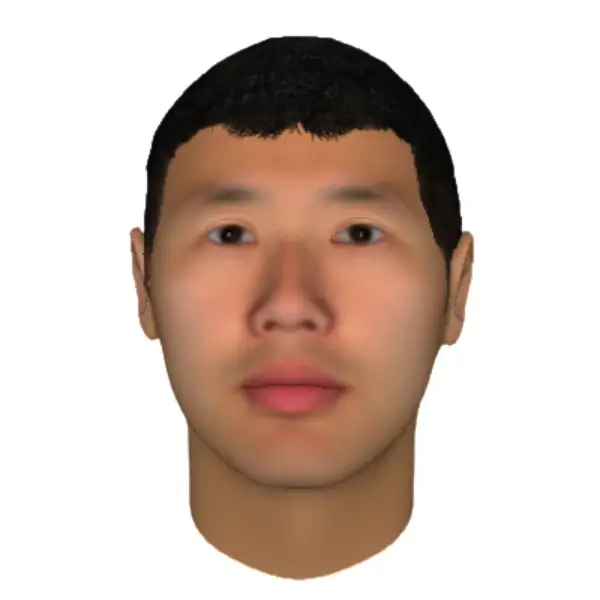
-
A:
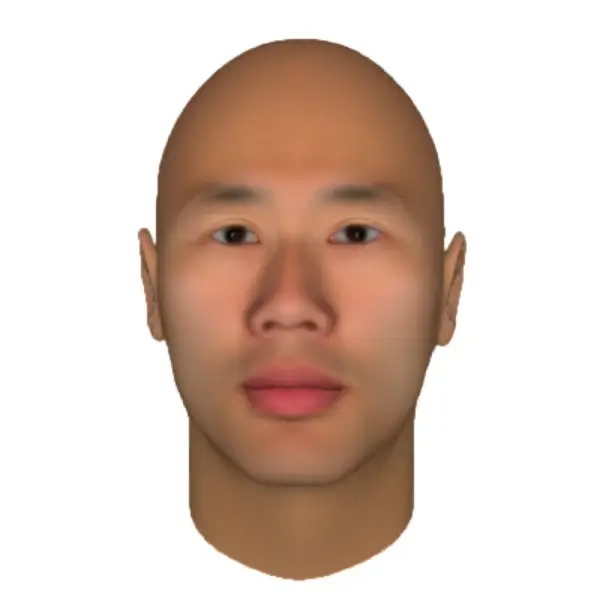
-
B:
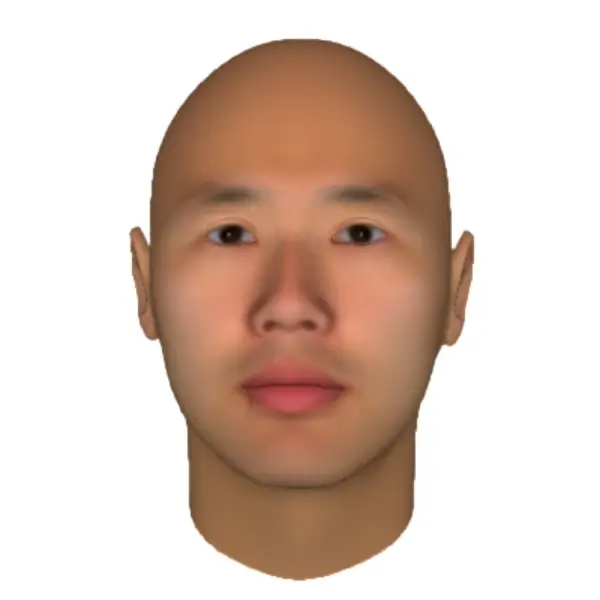
-
C:
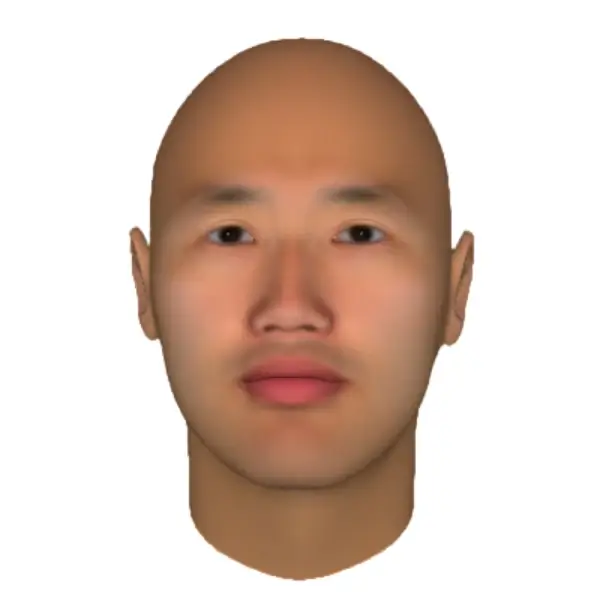
-
D:
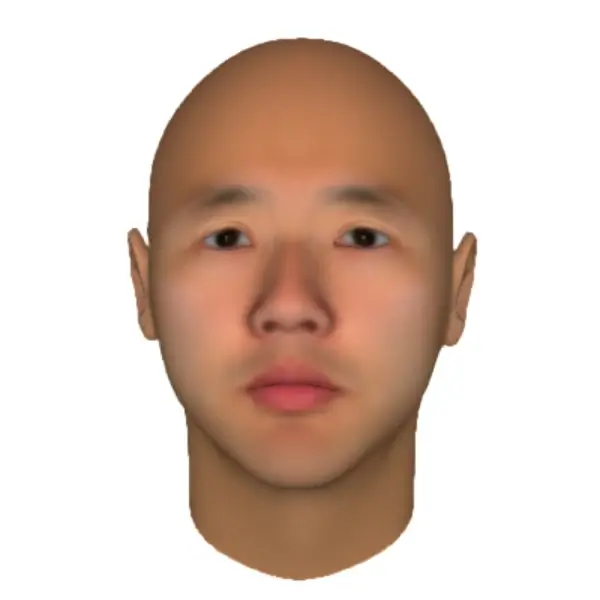
Explanation:
Option A has a gaunt face and eyes situated closer together.
Option B matches the features of the original image exactly.
Option C has a flatter nose and mouth situated upward.
Option D has a taller forehead, a retracted mouth, and a concave jaw compared to the original.
Thus, Option B is the correct answer.
Number Facility
Tests the ability to quickly and accurately perform basic mathematical operations such as addition, subtraction, multiplication, and division. This skill is crucial for the daily tasks of an officer that require handling numerical data and calculations.
-
A:
Security: 60 hours, Rehabilitation: 50 hours, Administration: 30 hours
-
B:
Security: 90 hours, Rehabilitation: 60 hours, Administration: 30 hours
-
C:
Security: 90 hours, Rehabilitation: 45 hours, Administration: 45 hours
-
D:
Security: 75 hours, Rehabilitation: 60 hours, Administration: 45 hours
Explanation: To determine how many hours of training each department receives, given the total training hours and the ratio, follow these steps: Identify the total parts in the ratio: The ratio given is 3:2:1.
- Sum of the parts: 3 + 2 + 1 = 6
- Total training hours: 180 hours
- Value of one part: 180 hours6 = 30 hours
- Security: 90 hours
- Rehabilitation: 60 hours
- Administration: 30 hours
Mathematical Reasoning
Tests the ability to solve complex mathematical problems using logic and reasoning. This involves understanding key details in a scenario, determining the operations required, and applying various mathematical concepts to solve the problems encountered on the job.
-
A:
68 square meters
-
B:
72 square meters
-
C:
84 square meters
-
D:
98 square meters
Explanation:
To find the total area of the composite shape, we need to calculate the areas of the rectangle and the right triangle separately and then sum them.
Calculate the area of the rectangle:
Length (l) = 10 meters
Width (w) = 6 meters
Area of the rectangle = l × w = 10 × 6 = 60 square meters
Calculate the area of the right triangle:
Base (b) = 6 meters (equal to the width of the rectangle)
Height (h) = 8 meters
Area of the right triangle = 12 x b × h
Area of the right triangle = 12 x 6 x 8
Area of the right triangle = 12 x 48
Area of the right triangle = 24
Calculate the total area of the composite shape:
Total area = Area of the rectangle + Area of the right triangle = 60 + 24 = 84 square meters
So, the correct choice is C: 84 square meters.
Personality Assessment
Evaluates traits and behaviors that show how well you’ll adapt to the role of a correctional officer. Focuses on reliability, judgment, teamwork, and stress tolerance. Success requires self-awareness, consistency, and the ability to reflect on your choices.

Correctional QuickPass
Last Updated: Sep 26, 2025
Course Content
-
 Introduction 2 StepsBuy this Course: Get full access to all lessons, practice tests and guides.
Introduction 2 StepsBuy this Course: Get full access to all lessons, practice tests and guides. -
 Written Comprehension 4 StepsBuy this Course: Get full access to all lessons, practice tests and guides.
Written Comprehension 4 StepsBuy this Course: Get full access to all lessons, practice tests and guides. -
 Written Expression 4 StepsBuy this Course: Get full access to all lessons, practice tests and guides.
Written Expression 4 StepsBuy this Course: Get full access to all lessons, practice tests and guides. -
 Problem Sensitivity 4 StepsBuy this Course: Get full access to all lessons, practice tests and guides.
Problem Sensitivity 4 StepsBuy this Course: Get full access to all lessons, practice tests and guides. -
 Memorization 4 StepsBuy this Course: Get full access to all lessons, practice tests and guides.
Memorization 4 StepsBuy this Course: Get full access to all lessons, practice tests and guides. -
 Number Facility 2 StepsBuy this Course: Get full access to all lessons, practice tests and guides.
Number Facility 2 StepsBuy this Course: Get full access to all lessons, practice tests and guides. -
 Mathematical Reasoning 2 StepsBuy this Course: Get full access to all lessons, practice tests and guides.
Mathematical Reasoning 2 StepsBuy this Course: Get full access to all lessons, practice tests and guides. -
 Deductive Reasoning 4 StepsBuy this Course: Get full access to all lessons, practice tests and guides.
Deductive Reasoning 4 StepsBuy this Course: Get full access to all lessons, practice tests and guides. -
 Inductive Reasoning 4 StepsBuy this Course: Get full access to all lessons, practice tests and guides.
Inductive Reasoning 4 StepsBuy this Course: Get full access to all lessons, practice tests and guides. -
 Information Ordering 4 StepsBuy this Course: Get full access to all lessons, practice tests and guides.
Information Ordering 4 StepsBuy this Course: Get full access to all lessons, practice tests and guides. -
 Spatial Orientation 4 StepsBuy this Course: Get full access to all lessons, practice tests and guides.
Spatial Orientation 4 StepsBuy this Course: Get full access to all lessons, practice tests and guides. -
 Visualization 4 StepsBuy this Course: Get full access to all lessons, practice tests and guides.
Visualization 4 StepsBuy this Course: Get full access to all lessons, practice tests and guides. -
 Personality Assessments 9 StepsBuy this Course: Get full access to all lessons, practice tests and guides.
Personality Assessments 9 StepsBuy this Course: Get full access to all lessons, practice tests and guides.- Personality Assessments - Introduction
- Knowing the Evaluations - Written Guide
- Interview Phase (Insights) - Written Guide
- Question Types - Written Guide
- Tips & Strategies - Written Guide
- Yes / No Type - Practice Quiz
- True / False Type - Practice Quiz
- 5 Point Type - Practice Quiz
- 7 Point Type - Practice Quiz
- Most / Least Type - Practice Quiz
- Ranking Type A - Practice Quiz
- Ranking Type B - Practice Quiz
Why Choose Correctional QuickPass?

Our course provides in-depth coverage of the essential topics tested on the correctional officer exam, ensuring you are fully prepared. More 500+ questions across all topics to practice.

We have carefully updated our course content to align with the most recent syllabus changes, as per the official correctional officer exam website. You can trust that you are preparing with the most up-to-date and relevant information.

The only prep course offering genuine insider insights, with detailed evaluation patterns, interview strategies, and full coverage of every personality test format—built to prepare you for the psychological evaluation in any correctional exam.

Our course features practice quizzes at easy, medium, and hard levels to make sure you’re fully prepared. Each quiz comes with detailed explanations for every question, helping you pinpoint and improve on your weak spots.

In addition to practice quizzes, our course includes study guides for each topic with sample questions and detailed explanations. These guides help you understand the topic and develop strategies to tackle the exam successfully.
Don’t settle for anything less than the best. Enroll in our Correctional Officer Exam Preparation Course today and take the first step towards your rewarding career in law enforcement.
Frequently Asked Questions (FAQs)
What is a good score on the Correctional Officer Exam?
A good score on the Correctional Officer Exam is generally considered to be 70% or higher, which is the minimum requirement in most states for passing. This threshold ensures that candidates possess the necessary knowledge and skills for the role. Achieving a score above 70% not only demonstrates proficiency but also makes candidates more attractive to both private and state correctional agencies, as higher scores suggest a stronger aptitude for the responsibilities associated with the position.
Is the Correctional Officer Exam hard?
The Correctional Officer Exam is challenging due to its comprehensive nature and the diverse skills it assesses, including written comprehension, mathematical reasoning, problem sensitivity, and situational judgment. The exam consists of multiple-choice questions that require not only a strong foundation in these areas but also the ability to apply this knowledge in practical scenarios. The emphasis on critical thinking and decision-making under timed conditions, along with the requirement of a minimum passing score of 70% in most states, makes the exam difficult. The fact that around 3-4% of applicants only pass highlights the importance of thorough preparation.
How can I prepare for the Correctional officer exam?
To effectively prepare for the Correctional Officer exam, focus on enhancing your reading comprehension, memory, and decision-making skills. Practicing with targeted study guides and simulated exams can significantly improve your performance, with studies showing a potential 60-70% increase in scores for those who use these methods.
Our prep course is specifically designed to cover these areas, offering practice tests that closely mirror the actual Correctional Officer exam. This will help you become familiar with the format, boost your confidence, and maximize your chances of success.
Can I retake the Corrections officer exam if I fail?
Yes, you can generally retake the Correctional Officer Exam if you fail, though specific policies vary by state. For instance, in California, applicants must wait a minimum of 3 months before retaking the exam, while other states may have different waiting periods or policies. It’s important to check the regulations for the state where you are applying. Given the exam’s challenging nature and the significant percentage of candidates who do not pass on their first attempt, thorough preparation is strongly encouraged to improve the chances of success.
Who needs to take the Correctional Officer Exam?
The Correctional Officer Exam is typically required for individuals seeking employment as correctional officers or similar roles within the criminal justice system. This exam is often administered by government agencies or correctional institutions to assess candidates’ suitability for positions that involve managing and supervising inmates in correctional facilities. It helps ensure that applicants possess the necessary skills, knowledge, and qualities for the job, such as problem-solving abilities, decision-making skills, and an understanding of correctional procedures.
What is the situational judgment section of the Corrections officers exam?
The Situational Judgment section of the Corrections Officer Exam involves hypothetical scenarios related to correctional work. It assesses how candidates would manage various on-the-job situations, asking them to select the most appropriate response or rate the effectiveness of different options. This evaluation focuses on decision-making skills, problem-solving abilities, and best practices for managing inmate interactions and maintaining security, without requiring prior knowledge of corrections.
What are the next steps after passing the Correctional Officer Exam?
After passing the Correctional Officer Exam, the next steps typically include:
- Submit Additional Documentation: You may need to provide additional documents such as proof of education, work experience, or identification.
- Background Check: Prepare for a thorough background investigation. This may include a criminal history check, verification of employment history, and interviews with personal references.
- Medical and Psychological Evaluations: You might need to undergo medical and psychological assessments to ensure you meet the physical and mental health standards required for the job.
- Physical Fitness Test: Some jurisdictions require a physical fitness test to assess your ability to handle the physical demands of the role.
- Interview: You may be required to participate in a formal interview or panel interview to assess your suitability for the position.
- Training Academy: If selected, you will typically attend a training academy where you will receive instruction in correctional procedures, law enforcement techniques, and other relevant topics.
- Probationary Period: After completing training, you may begin your role under a probationary period, during which your performance will be evaluated.
- Ongoing Training and Certification: Be prepared for ongoing training and certification requirements to maintain your skills and stay updated on best practices.
Be sure to check the specific requirements of the agency or jurisdiction you are applying to, as processes can vary.
What is involved in the psychological evaluation for correctional officers?
The psychological evaluation for correctional officers is essential for assessing candidates’ mental and emotional readiness for the role. It includes written assessments, such as two personality inventories and a Psychological History Questionnaire, followed by an interview with a licensed psychologist.
The evaluation focuses on emotional resilience, judgment, interpersonal skills, and coping mechanisms. Its goal is to ensure candidates have the necessary stability and fortitude to handle the challenges of working in a correctional facility, contributing to overall safety and security.
What types of background checks are conducted during the Corrections officer’s recruitment?
During correctional recruitment, the types of background checks conducted may include:
- Criminal History Check: This involves a review of any past criminal records to ensure the candidate does not have a history that would disqualify them from working in a correctional facility.
- Employment History Check: Verification of previous employment to confirm the accuracy of the candidate’s work history and assess their job performance and reliability.
- Education Verification: Confirmation of the candidate’s educational qualifications and degrees to ensure they meet the necessary requirements for the position.
- Credit Check: An assessment of the candidate’s credit history to evaluate their financial responsibility, which can be relevant in positions involving sensitive information or financial matters.
- Drug Screening: Testing for illegal substances to ensure the candidate is not using drugs that could impair their ability to perform the job effectively.
- Reference Check: Contacting previous supervisors or colleagues to gather information on the candidate’s character, work ethic, and suitability for the role.
Will my credit history affect my chances of becoming a correctional officer?
Your credit history might affect your chances of becoming a correctional officer, as some agencies conduct credit checks during background screenings. While credit history can reflect reliability and responsibility, its relevance is debated, especially in roles involving sensitive information or finances. Employers must obtain consent before checking credit, and there is no clear link between credit scores and job performance. If you’re concerned about your credit history, addressing it proactively in your application by highlighting your skills and explaining any financial issues can help focus attention on your overall qualifications.
*Note: CDCR, CJBAT-CO, LEE, NCOSI and other trademarks are the property of their respective trademark holders. None of the trademark holders are affiliated with PrepTerminal or this website.

Created by: Michael Learner
Psychometric Tutor, Prepterminal Test Expert
2587 students, 4.8, 290 Reviews
Hey, welcome to Correctional QuickPass Prep Course. I’m Michael Lerner, I am here to assist you with any queries about the Correctional Officer Exam. Don’t hesitate to contact me at [email protected].
